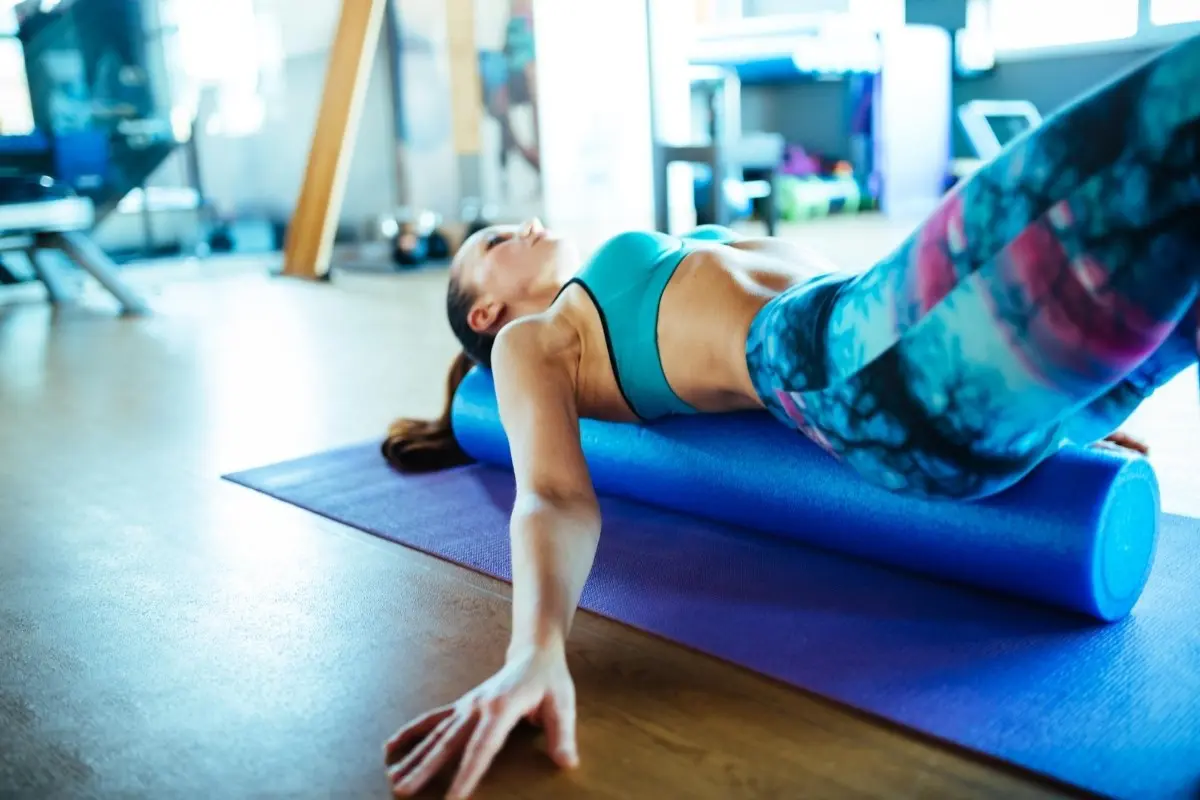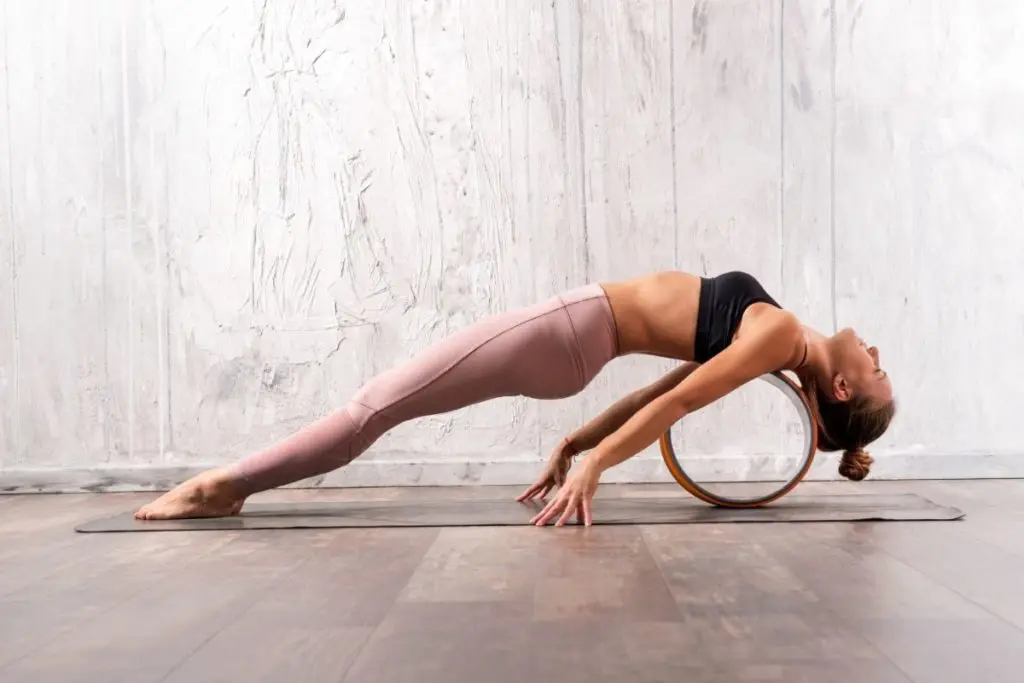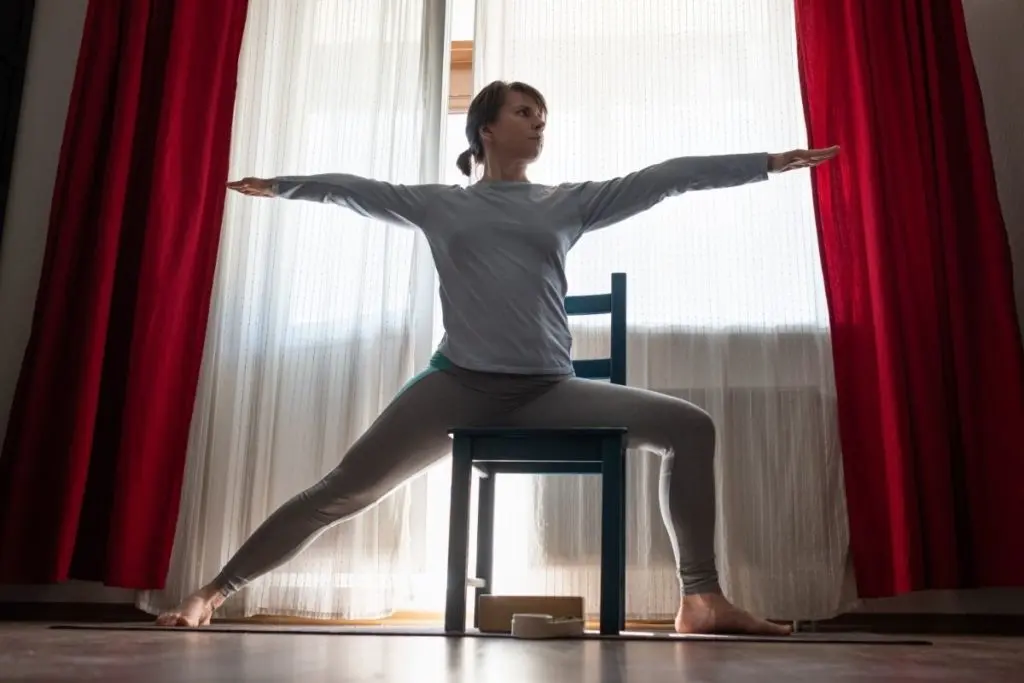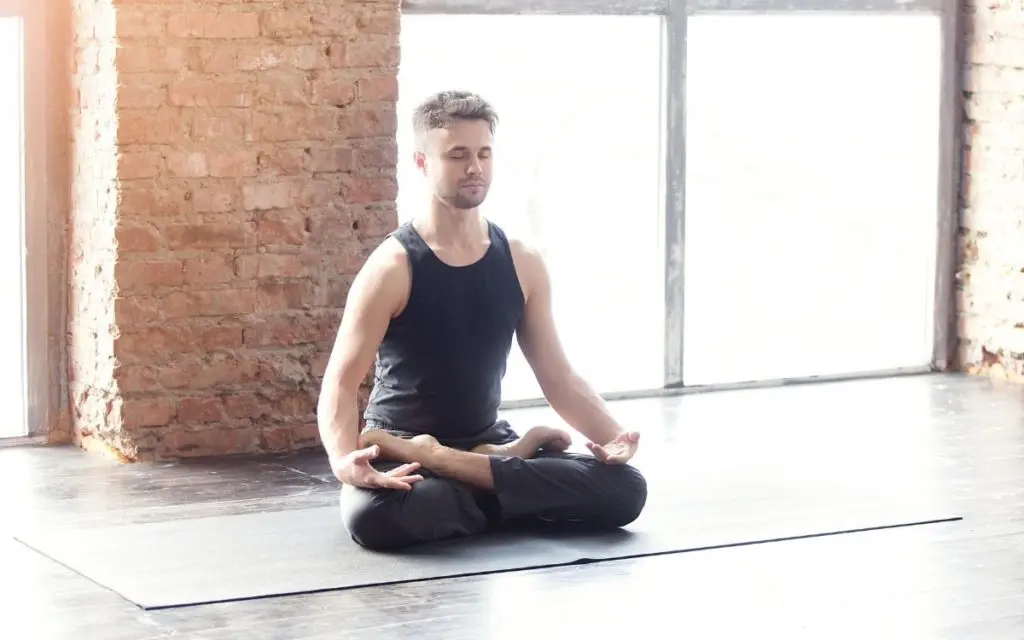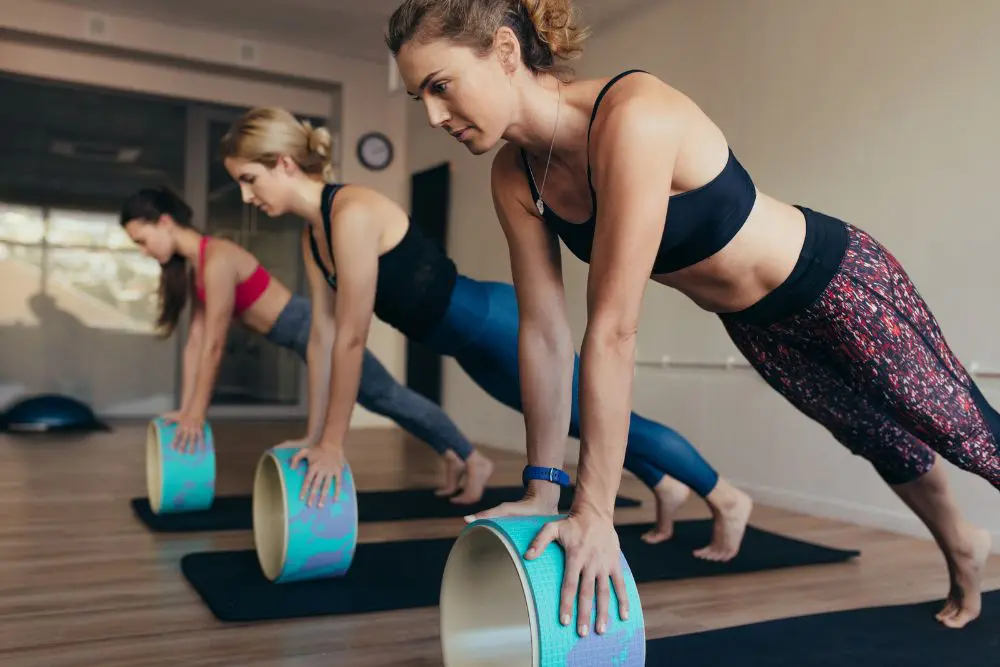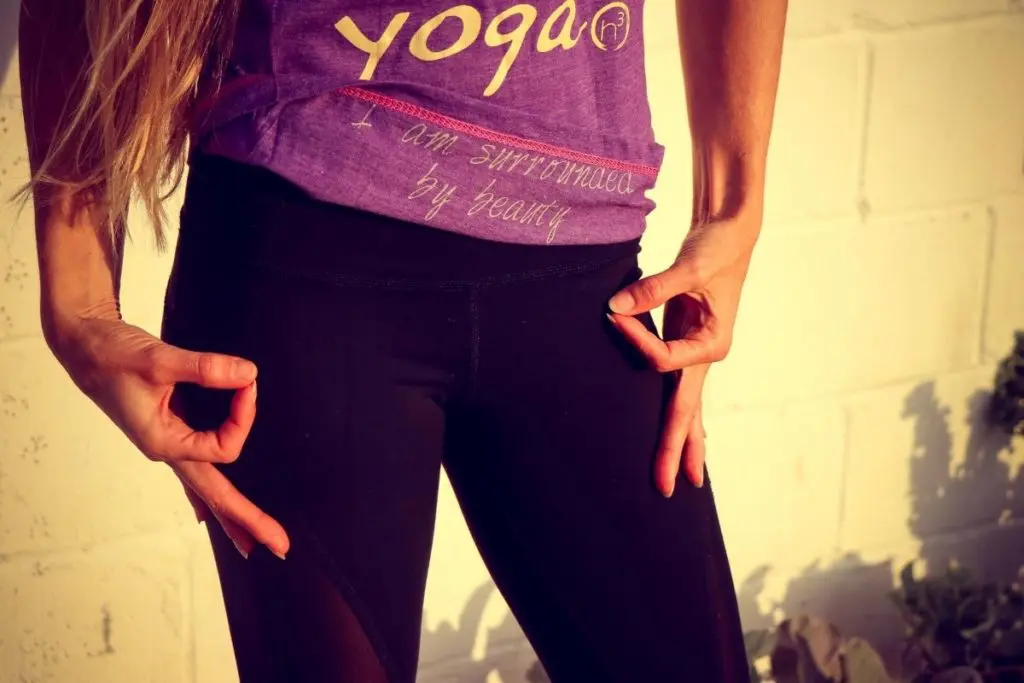If you’ve found yourself with your curiosity piqued by foam rollers, you’re not alone. Whether using them at home or the gym, the health benefits of foam rolling are substantial. Still, you might’ve found yourself wondering what are the benefits of foam rolling?
Foam rollers are a powerful way to reduce tension and create muscle length in a process known as self-myofascial release (SMR). This technique is useful to prevent severe soreness, muscle tightness, and muscle strain. It works by easing trigger points — places where you are likely to have a muscle strain or pain — and improving tissue durability.
Foam rolling can take place before or after your exercise to effectively release tension in your muscles and help decrease the risk of soreness. It’s a safe practice to incorporate into your workout regimen when done correctly.
Tips for Safety
- Avoid using a foam roller if you have a serious injury like a muscle tear or break.
- Avoid rolling over small joints like knees, elbows, and ankles.
- It’s always a good idea to consult your doctor if you have questions or concerns.
- Foam rolling is generally not a pleasant sensation, but know your limits when beginning and don’t push beyond them until you feel comfortable.
Here’s what you can expect from foam rolling and six benefits of incorporating foam rolling into your regular exercise routine.
How Does Foam Rolling Work?
While learning about the foam roller exercise benefits is fascinating, it’s also important to note how a foam roller works. You should know precisely what the foam roller is doing to your body to ensure you are reaping the maximum benefits. It’s crucial to understand the proper ways to use a foam roller for your body type and what body part you’re targeting while foam rolling. It can be useful to carefully experiment to determine what position and muscles will be best impacted by foam rolling for your exercise routine.
Place the foam roller between you and the floor. People often use foam rollers on their legs and back because these areas tend to tighten up faster depending on what kind of exercises you’re participating in. With the foam roller between you and the ground, begin to slowly move back and forth, having one or both hands placed firmly on the ground to help support your weight. You should feel the foam pressing deeply into your muscles. The sensation might not always be pleasant, but the benefits of a foam roller are unmatched.
Foam rollers come in different materials and sizes. Some are completely foam, others have a foam exterior wrapped around a hard plastic inside. Some have smooth surfaces, while others have ridges. When you first start foam rolling, we suggest that you begin with a smooth-surface & 100% foam roller. Once you’re comfortable with the motions here, feel free to move on to stiffer foam rollers.
6 Benefits of Foam Rolling
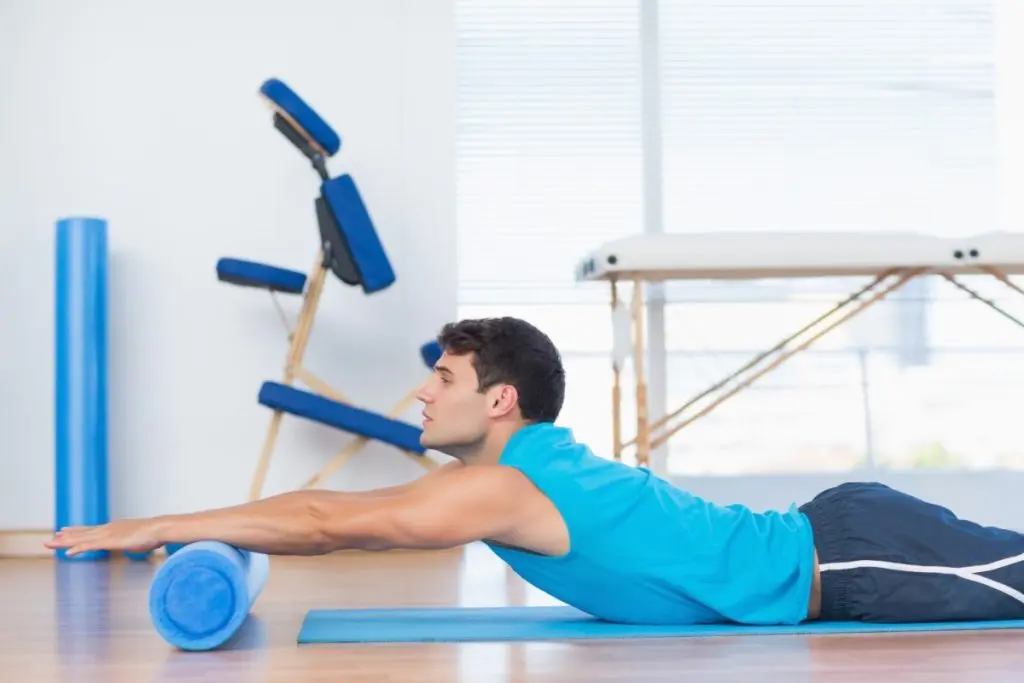
Next, let’s take a look at six of the primary benefits gained from using a foam roller.
1
Reduce the Risk of Adhesions
You might be familiar with the “knots” you get after a particularly hard workout. These are painful patches on your muscles that ache even when you’re not exercising. Foam rolling can help prevent these by smoothing out your muscles post-workout.
Adhesions (“knots”) occur from a build-up of collagen between layers of muscle. If you remain in the same position for an extended period of inactivity (i.e., a night of sleep or working at a desk), knots can form. The excess collagen can make the muscles ache when they rub against each other. A foam roller will reduce this and can lead to a decrease in soreness after your exercises. Rolling out your muscles after your workout and on the day after can decrease the risk further.
2
Increase Range of Motion
While we’d like to see more research, several studies have suggested that regular foam rolling can improve your range of motion. This improvement can be particularly beneficial for those who tend toward exercises like running, yoga, and swimming. However, it’s still a good idea to have a good range of motion to help you lift heavier weights for longer.
It’s essential to keep in mind that the improvement in range of motion from foam rolling is the most effective when used in combination with regular stretching. For the best results, combine foam rolling and static stretching to cool down at the end of your workout.
3
Boost Performance
Foam rolling gained popularity when professional athletes began incorporating it in their post-workout cooldown routine. The claim: Foam rolling can boost overall performance. Now it’s common for people hitting the gym to have adopted the same mindset. Many are incorporating foam rolling to part of their regular cooldown flow.
Suppose your body requires less time to recover because its muscle tension has smoothed out from foam rolling. In that case, one can anticipate an increased athletic performance in any following workouts. W We recommend this practice for those looking to get into great shape fast and maintain that shape for an extended period. Consistent foam rolling can lead to these positive results.
4
Helps With a Speedy Recovery
Instead of letting sore muscles that take a toll on your workout set you back, use a foam roller to help aid with a speedy recovery. When using a foam roller correctly and regularly, you can expect an increase in the recovery time after a tough workout.
Use a foam roller directly after a workout. Just like stretching helps lengthen tightened muscles due to extended and difficult use, foam rolling smooths out muscles and prevents injury and tension.
However, foam rolling the day after a workout when the soreness has already set in can still be beneficial. Next-day foam rolling acts like rehabilitation of the muscles. For the most significant recovery, use foam rolling directly after your workout and the subsequent days.
5
Reduce Back Pain
If you regularly struggle with back pain, foam rolling might be a reliable factor to incorporate into your workout routine. Use caution when foam rolling your back because it’s possible to create further pain and strain if done incorrectly.
To avoid this strain, keep the foam roller vertical and in line with your spine when rolling back and forth. Place your hands on either side of your body to support this motion. This position avoids any arching of the back that is present when foam rolling horizontally. Consistently foam rolling your back can lead to long-term pain relief results.
6
Prompts Relaxation After a Workout
One of the more unique benefits of foam rolling is its ability to make you feel relaxed after a workout. More research will help determine precisely what is activating to make this happen. People have consistently reported that smoothing out their stiff muscles after a long and vigorous workout has made them feel more relaxed and calmer. More importantly, if using foam rolling to release muscle tension also helps relieve your stress, you should definitely add it to your exercise routines.
More research will help to determine exactly how foam rollers can have incredible impacts on your exercise routines. But there are plenty of theories that support the practice. Foam rolling, when done correctly, is an ideal part of an effective workout.
Further Reading
